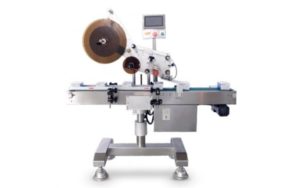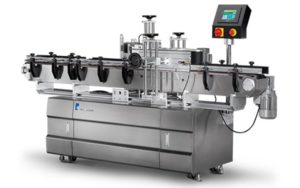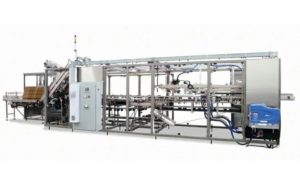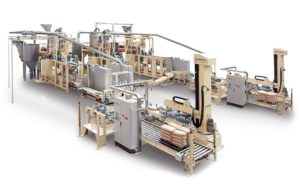The videos below are examples of the Wrappers Frain Carries
Horizontal Wrapper videos
Inverted Horizontal Wrapper Videos
Overwrap Bar Videos
Cut, Wrap & Twist Videos
Fold Bunch Videos
Learn more about Wrappers
How double roll wrappers work:
These are great machines, simple, little to no changeover between products and can run at low to medium production speeds.
Their main drawback is that they can’t run in registration. Colorful graphics on the film attract the customer’s eye as well as provide product information.
To run graphic film, in registration, a single roll wrapper is required. These can run at high speeds, 60 wraps or more per minute. Multiple lanes can make them even faster.
Product is fed to the wrapper in multiple lanes corresponding to the pack pattern.
At the infeed they are separated into 6 lanes and grouped into a 3 across by 2 long pattern. A conveyor carries the 6 packs to the wrapping station where they are timed to the film.
Under the wrapper, 2 rolls of film are unwound and cut to length on the registration mark. A vacuum conveyor carries the film up and positions it about 1” onto the wrapping conveyor.
Once the film is in position, bottles are moved onto the wrapping conveyor and the film is released. As bottles and film are conveyed, a rotating arm comes up under the trailing edge of the film, lifts it up and over the bottles then into a gap between wrapping conveyor and shrink tunnel conveyor.
As the bottles transfer between conveyors, they pull the leading edge of the film under so that it overlaps the trailing edge. The heat tunnel conveyor is sufficiently hot to seal the overlapped film layers.
As they pass through the tunnel, the film shrinks into a tight conformal bundle.
Side sealing shrink wrappers folded film with 3 seals to make a complete 6 sided wrap.
The finished package is the same as an L-bar seal but there is no L-bar. These machines commonly run in continuous motion at speeds to 200 packages per minute or more.
Continuous motion requires that the product be fed in synchronization with the wrapper. Lug chains are used in some machines. Other machines use servo driven conveyors with sensors to maintain synchronization.
Folded film is pulled off the roll. Some lower speed machines pull the film with the saide sealing rollers. Higher speeds will require a motorized unwind to avoid excess tension on the film and/or slippage in the sealing rollers. A pinwheel roller perforates the film as it unwinds. This is necessary to allow venting during shrinking to prevent a pillow effect. Guides open the film and pass it over and under the conveyor.
The open side of the film is captured by a pair of upper and lower wheels. These wheels serve 3 functions:
- They pull the film forward and through the machine (aided by the conveyor)
- They seal the film lengthwise
- They cut off excess material
The infeed pushes the product onto the film between the layers. The film is held open by guides. The sealing wheels and conveyor pulls the film with product through the machine, sealing the open side as well as cutting off excess material. After side sealing, the product is enclosed in a 3 sided tube.
A transverse or cross cutting bar seals the trailing end of the film, the leading end of the next package and cuts them apart. This cutting/sealing bar reciprocates vertically. On an intermittent motion machine no longitudinal motion is required. For continuous motion the cutting/sealing bars must be mounted on a mechanism that permits them to move lengthwise with the film as it is being sealed.
After sealing, the package passes to a shrink tunnel where heat shrinks the film conformally to the product.
Some of the Manufacturers We Carry




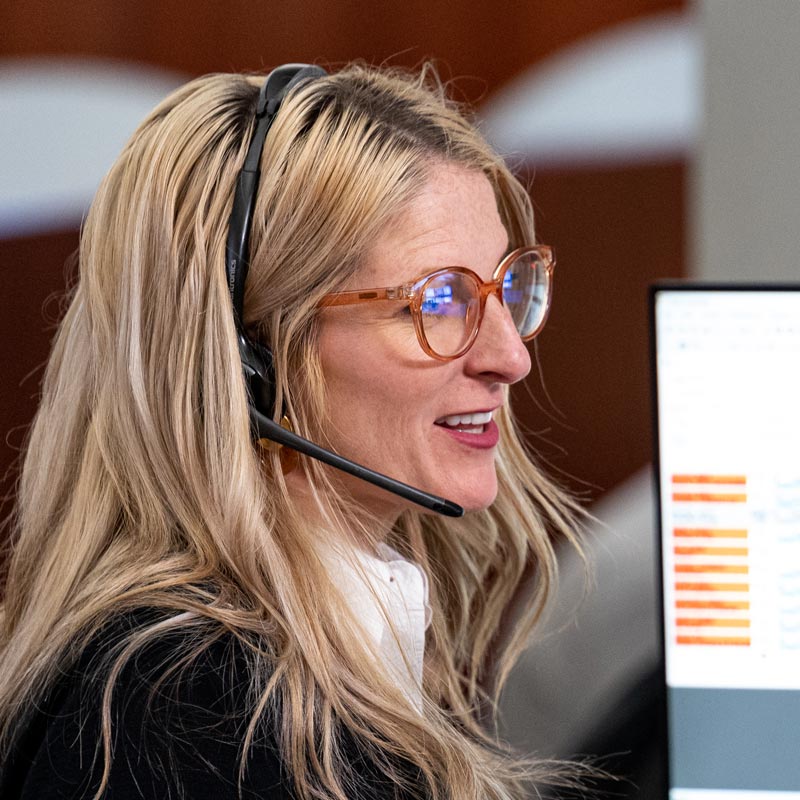
Contact Your Engineer
Discuss your application directly with our qualified engineers.
